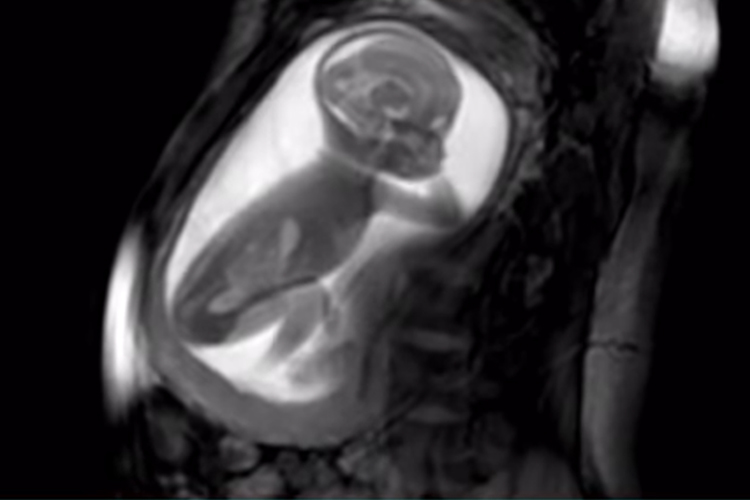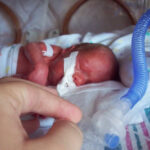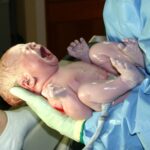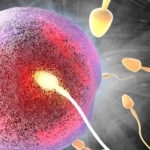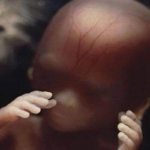Blog Post
Why abortion activists hate photos of pre-born babies
By Jonathon Van Maren
If the pre-born are not human, pro-life apologist Scott Klusendorf is fond of saying, then no defence of abortion is necessary. But if they are human, no defence of abortion is adequate. The entire abortion debate hinges on whether or not the person being aborted is, in fact, a person. Human beings have human rights. Human rights can only begin when the human being begins. And there is an iron-clad scientific consensus as to when a new, unique, and whole human being begins his or her life: At fertilization.
As we have acquired the ability to witness what takes place in the womb during the earliest stages of human development through ultrasound technology, the pro-choice movement has been forced into making increasingly untenable arguments. Many have simply accepted the fact that they are killing a human being, but claim that it is a moral act because it is legal. Others, like Peter Singer, have advocated for the legalization of infanticide and attempted to deny personhood status to pre-born children. Many simply attempt to deny the science entirely.
The difficulty with that last—and most common—approach is that it defies an enormous body of growing evidence. Thus, we have delusional articles like this recent column in Vice, titled “The Iconic Photo Hijacked By the Anti-Abortion Movement.” According to Amarins Eggeraat, images of babies in the womb should are being used as pro-life propaganda:
If you look up the word abortion in a stock image bank, you’ll find roughly three types of photograph: sad women, protesters holding pro-choice signs or foetuses, usually near-fully developed, with a human face, closed eyes and sometimes even a tiny thumb in their mouth.
Besides being morally loaded, the visual association between these tiny babies and abortion is also scientifically incorrect, since the vast majority of procedures are carried before 13 weeks. And yet, anti-abortion movements have used foetuses as a primary symbol since the 1970s.
A few comments on those strange assertions. Contrary to what Eggeraat suggests, many of the photos used by the pro-life movement (including the organization I work for) utilize photos of pre-born children prior to 13 weeks. Those children, contrary to her insinuation, look very much human. To imagine them suctioned into slurry is to visualize what Eggeraat is defending. More:
For most of human history, foetuses weren’t actually visible. We didn’t know much about how they evolved in the womb, we only had drawings and wax models based on stillborns, or foetuses preserved in jars of formaldehyde. That all changed with Swedish photographer Lennart Nilsson’s book of photography A Child Is Born, which became a global sensation after appearing in Life magazine in 1956. Nilsson captured extreme closeups showing the different stages of human development, from fertilised egg to fully-formed baby.
The colour photographs were one of the first representations of the miracle of life, and really gave viewers the impression they were staring directly into the womb, looking at a foetus calmly floating around like a little astronaut. In reality, Nilsson photographed miscarried and aborted foetuses, using artist lighting and planning his subjects’ postures. The same year Nilsson’s series came out, a hospital in Glasgow used ultrasound technology for foetal screenings for the first time. Now our best tool for checking foetal development before birth, the ultrasound changed prenatal care (and motherhood) forever.
These scans were more than a medical exam – they were our earliest “window into the womb”, as media studies professor José van Dijck wrote in 2001. Before then, only mothers could really know how the pregnancy was developing – they’d be the first to feel the signs of life, or if something wasn’t right.
But since these new exams could only be interpreted by specialists, medical personnel became responsible for directly monitoring the foetus’ well-being, while the mother’s role drifted into the background. “The same technology that made the foetus visible, has made the mother invisible,” wrote American political scientist Rosalind Pollack Petchesky in an influential 1987 essay.
Again, this is almost entirely revisionist history. The reason photographs of pre-born children were (and are) utilized was not to push mothers to the background or some such nonsense. It was to answer a fundamental question as the abortion movement began to achieve success following the Sexual Revolution: Who, exactly, was being aborted? If abortion simply removed a clump of cells, then we could comfortably accept its legalization. But if it destroyed a child, that was another matter entirely. Photographs shed light on the subject at the centre of the abortion debate—the very subject abortion activists desperately wanted to avoid. More:
And then, the public window into women’s private domain became political. Before ultrasound technology, anti-abortion activists often relied on religious or moral arguments against safe access to abortions. But the powerful imagery of prenatal scans helped them strengthen their cause –triggering people’s protective instincts towards what looked like a tiny unborn child.
Still living in Sweden, Nilsson was said to have been shocked when he visited London in the 1980s to find his own images plastered on anti-abortion posters. Realising how the images were being used abroad, he refused to allow them to be published again, until an exhibition shortly before his death.
It really is impressive how much Eggeraats has managed to get wrong. In fact, abortion was first banned in the United States because of campaign by doctors who had begun to realize, based on an increasing body of evidence, that life began much earlier than “quickening” as previously assumed by many. (Dr. Daniel K. Williams of the University of West Georgia has written a fantastic book on this subject, Defenders of the Unborn.) The push to get pro-life legislation was a drive for science-based legislation; the push to repeal those laws was a naked attempt to legalize back-up contraception in the wake of the Sexual Revolution. More:
In her 1987 essay, Petchesky argued the pro-choice movement hadn’t found an image powerful enough to match the foetus as an icon of the anti-abortion movement. According to Christa Compas, director of Humanistisch Verbond – an NGO based on secular humanistic values – that remains true today. “I would love it if there was a powerful image in support of the idea that people have the right to choose and shape their own lives,” Compas said in a 2019 interview.
The fact that women can die from unsafe abortions clearly hasn’t been enough to stamp out the anti-abortionist movement. Today, feminist movements across the world are going up against imagery that associates abortions with baby-killing. And for pregnant women, the procedure is still often associated with shame and tragedy. But in reality, many women also feel relief and a renewed sense of control after the procedure. Abortions can save lives: theirs.
Nowhere does Eggeraats address the central point here. The reason photos of the foetus are powerful is that they show us who is being killed during an abortion. A single photo of a baby in the womb dispels all the murky nonsense pushed by abortion activists and forces us to confront the truth about feticide. Sonogram photos aren’t propaganda. They are evidence. Eggeraats’ essay inadvertently makes that point for us: Abortion activists cannot believably assert their unscientific claims unless photos of children in the womb are ignored or dismissed.


